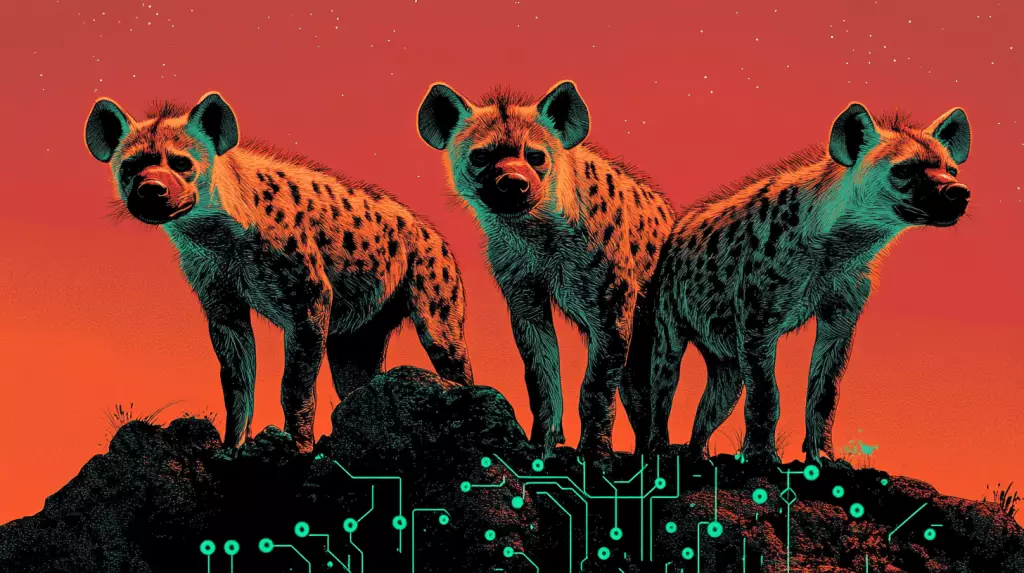In the ever-evolving field of artificial intelligence, particularly in the realm of language models, the dominance of the Transformer architecture is palpable. However, Liquid AI, an innovative startup born from the bright minds at the Massachusetts Institute of Technology (MIT), is on a mission to transcend this established infrastructure. Their latest brainchild, Hyena Edge, is poised to disrupt the industry by offering a convolution-based, multi-hybrid model tailored specifically for deployment on smartphones and other edge devices. With the International Conference on Learning Representations (ICLR) 2025 just around the corner in Vienna, the spotlight is set to shine brightly on this transformative technology.
Hyena Edge: A Game Changer for Performance
Developed with the goal to outperform the best available Transformer models across critical metrics, Hyena Edge presents a compelling case for a new paradigm in AI methodology. Unlike many mobile-optimized models that predominantly adhere to the traditional attention-centric frameworks, Hyena Edge employs a unique approach. By substantially replacing the conventional grouped-query attention (GQA) mechanisms with gated convolutions derived from the Hyena-Y family, this model manages to strike an exceptional balance between efficiency and performance.
Real-world testing conducted on high-end smartphones, such as the Samsung Galaxy S24 Ultra, has unveiled impressive results. Hyena Edge exhibits latency reductions of up to 30% compared to its Transformer++ resentatives. Such speed enhancements are particularly evident as sequence lengths increase, an essential characteristic for applications demanding immediate responsiveness. Moreover, it utilizes significantly less memory during inference, making it an ideal candidate for use in environments where resources are constrained, thereby ensuring smoother user experiences.
A Cut Above the Rest: Efficiency Meets Quality
What distinguishes Hyena Edge from its competitors isn’t merely its reduced latency or memory footprint; it’s the model’s remarkable ability to maintain, if not enhance, predictive accuracy. Trained on a substantial dataset of 100 billion tokens, Hyena Edge was rigorously evaluated across various language model benchmarks, including Wikitext, Lambada, and PiQA. Notably, the model either matched or surpassed the performance metrics of the established GQA-Transformer++, achieving lower perplexity scores and higher accuracy rates. This remarkable feat is indicative of a critical industry issue—many edge-optimized models often sacrifice quality for efficiency. Yet, Hyena Edge turns this trend on its head, proving that high performance doesn’t need to come at a cost.
STAR Framework: The Secret Ingredient
The foundation of Hyena Edge’s innovation can be traced back to Liquid AI’s Synthesis of Tailored Architectures (STAR) framework, a pivotal tool that employs evolutionary algorithms to optimize neural network designs specifically suited for various hardware settings. Revealed in late 2024, STAR stands out by exploring a plethora of operator compositions, rooted in robust mathematical theories, to achieve goals like reducing latency and memory usage while simultaneously improving output quality.
The systematic approach of STAR allows Liquid AI to drive meaningful advancements in model architecture. Innovation thrives on iteration, and the iterative refinement process of Hyena Edge showcases how the internal structure has evolved. Changes in operator distributions, including the mix of Self-Attention layers and advanced gate mechanisms, depict a dynamic development process that has led to augmented performance metrics—an exhilarating witness of evolution in action.
Visualizing the Evolution: A Peek Behind the Curtain
Liquid AI takes transparency seriously, evident in their recent video walkthrough of the Hyena Edge development. This compelling visual narrative doesn’t just celebrate the AI’s final form; it candidly showcases the iterative journey that led to its creation. Viewers can appreciate how various design choices influenced vital performance aspects—an inner glimpse into the workings of an advanced model. Such insight into decision-making processes around operator dynamics enriches our understanding of model performance in a substantive manner.
The utilization of media to narrate the development story is an essential move towards education in the AI community. By shedding light on architectural design principles, the video bridges the gap between technical complexity and user comprehension, empowering developers and researchers alike with knowledge that can inform their future endeavors.
A Glimpse into the Future of AI Models
Liquid AI’s commitment to open-sourcing their Liquid foundation models, including Hyena Edge, heralds an exciting chapter in AI development. This unprecedented accessibility has the potential to democratize advanced AI solutions, making them available for a broader audience—ranging from cloud data centers to personal edge devices.
As the demands for sophisticated AI applications on mobile devices continue to rise, Hyena Edge not only sets the groundwork for a new standard but also positions itself as a harbinger of innovative accomplishments in AI architecture. The tech industry stands at a pivotal moment, one ripe with opportunities, as we embark on this journey toward more efficient, capable, and accessible AI systems. The potential for alternative models to rival the existing Transformer-based frameworks has never been more promising, paving the way for a genuinely revolutionized approach to AI.


Leave a Reply